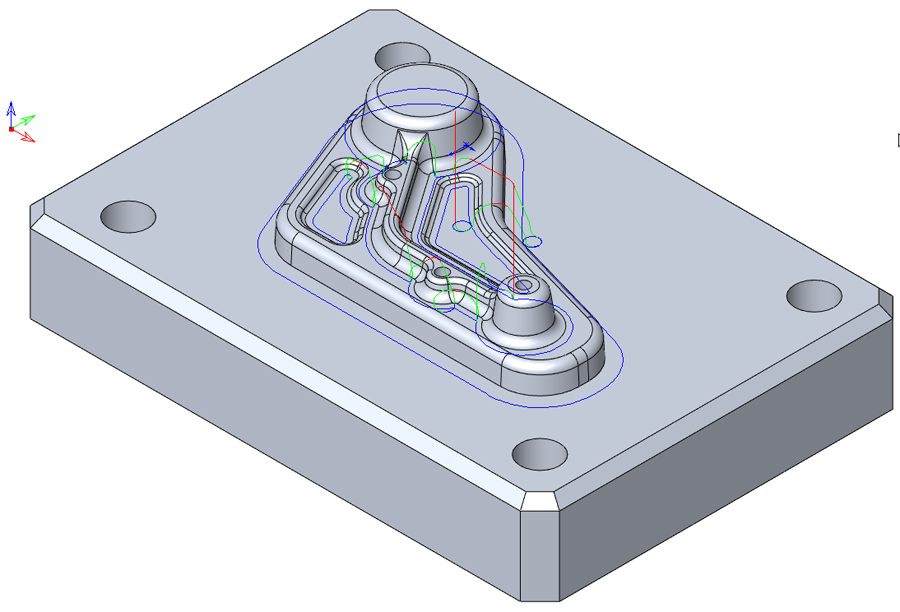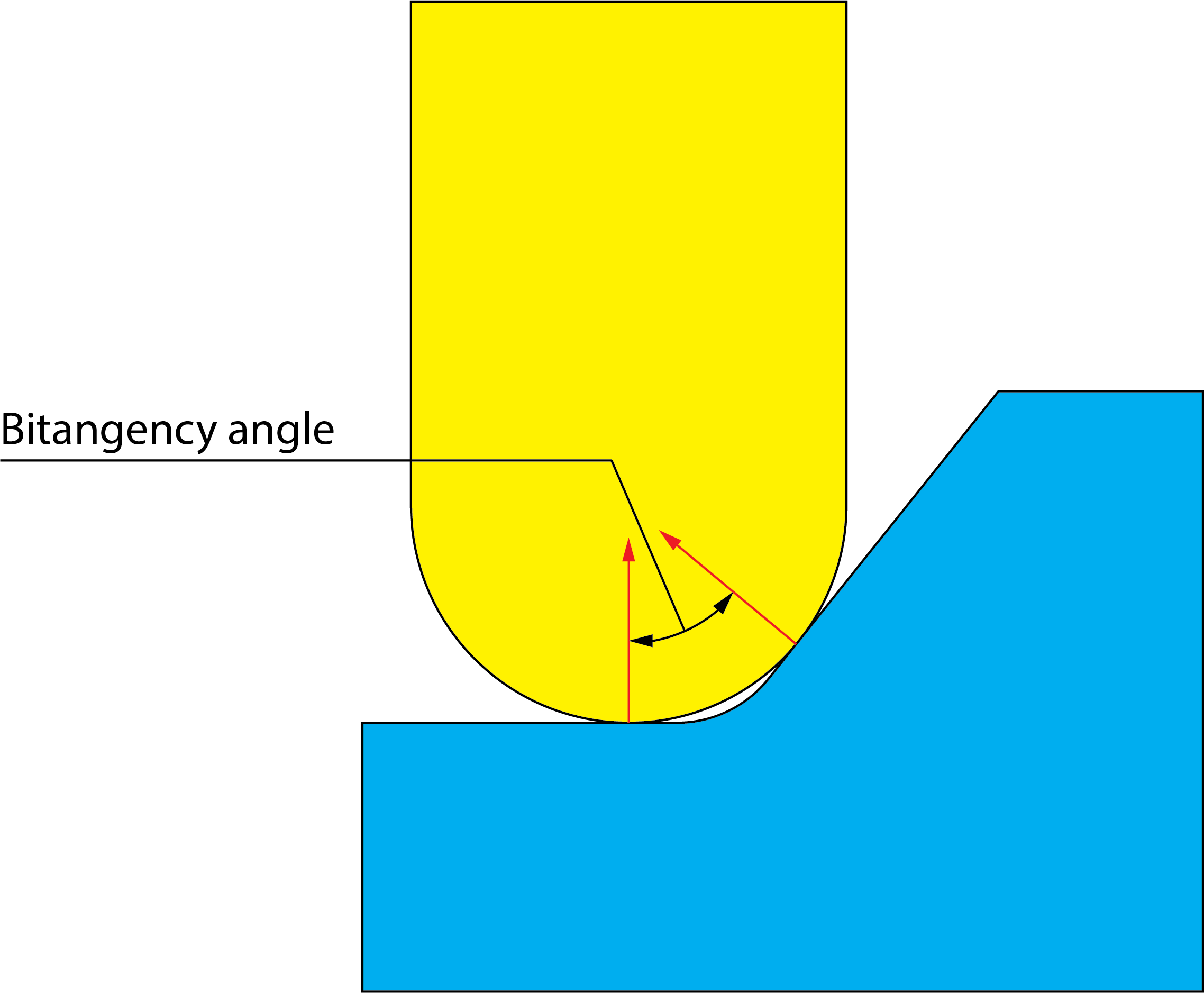Pencil milling parameters
The Pencil milling strategy creates a tool path along internal corners and fillets with small radii, removing material that was not reached by previous machining. This strategy is used to finish corners which might otherwise have cusp marks left from previous machining operations. This strategy is useful for machining corners where the fillet radius is the same or less than the tool radius.

Overthickness
This parameter enables you to define an extra thickness that can be temporarily applied to the tool in addition to the normal Wall offset.
You can use the Overthickness parameter to generate a tool path along fillets whose radius is greater than the tool radius. For example, if you have a filleted corner of radius 8 mm and you want to create a Pencil milling tool path along it with the 10 mm diameter ball-nosed tool, you can set the Overthickness value to 4 mm. The Pencil milling tool path is calculated for a ball-nosed tool with the diameter of 18 mm (which will detect this fillet), and then projected back onto the surface to make a tool path for the 10 mm diameter tool.
Since this is an offset value, it is specified in exactly the same manner as other offsets, except that it is added to the defined tool size, in addition to any surface offset, during calculations.
Bitangency angle
This is the minimum angle required between the two normals at the contact points between the tool and model faces, in order to decide to perform the pencil milling.

The default value of the Bitangency angle parameter is 20°. Generally, with this value SolidCAM detects all the corners without fillets and with fillet radii smaller than the tool radius. To detect corners with fillets radii greater than the tool radius you can either use the Overthickness parameter or decrease the Bitangency angle value. Note that decreasing the Bitangency angle value can result in the occurrence of unnecessary passes.
Related Topics